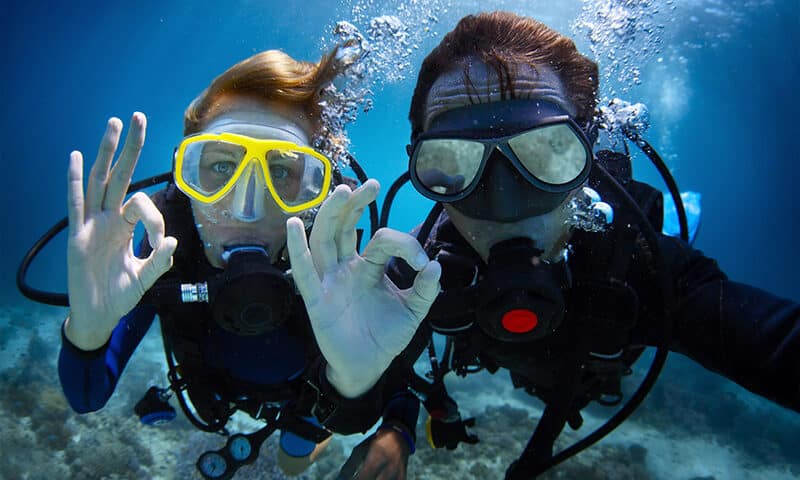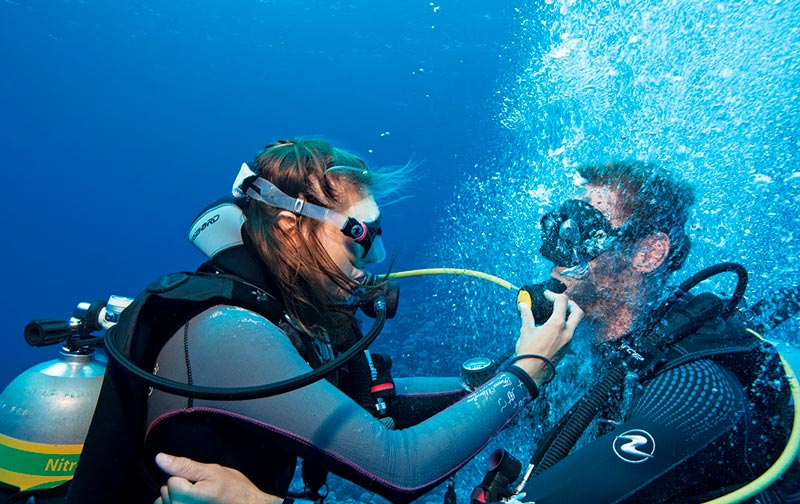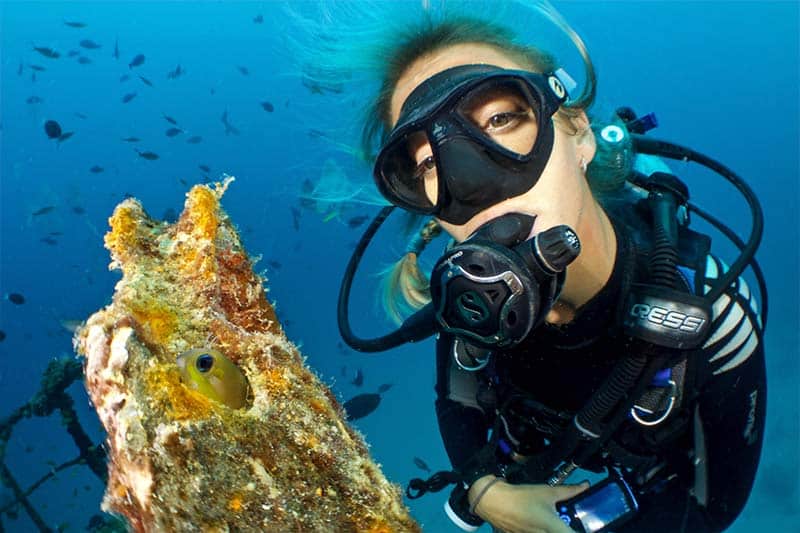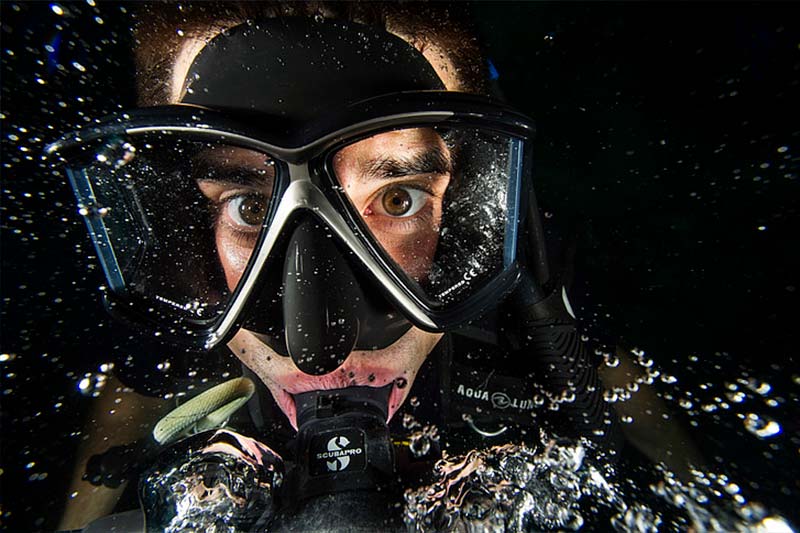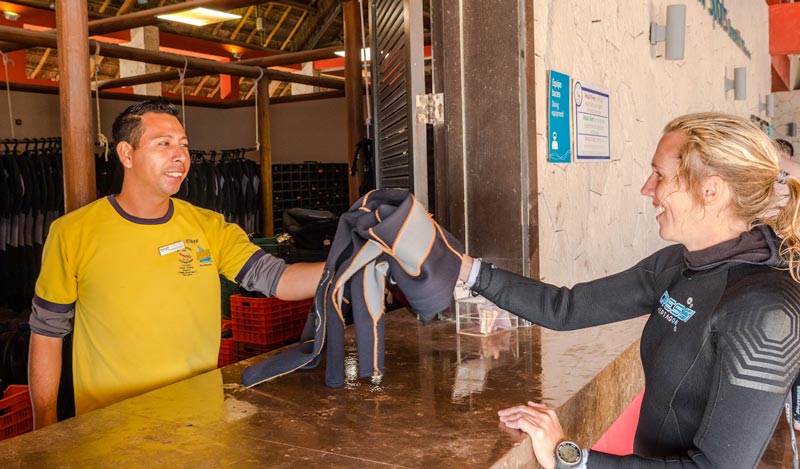3. Underwater Breathing Techniques for Diving
3.1. Principles Underlying Underwater Breathing Techniques
First, CO2 is the key player here. We need to eliminate it at the same rate it’s produced. If we don’t, our brain will tell our lungs to speed up and breathe faster. The goal is to have as little CO2 in our body as possible.
Second, maximize oxygen in the blood without breaking a sweat. The problem is, that as pressure rises, we consume more air and need more effort to breathe. Controlling the pace and breathing slow and deep is the play to avoid getting tired.
3.2. How Do We Train for Underwater Breathing?
With These Techniques.
Slow Diaphragmatic or Abdominal Breathing
This underwater breathing technique involves using the diaphragm instead of the chest muscles. Using the diaphragm brings air to the lower third of the lungs, increasing gas exchange. It’s like putting gasoline directly into the engine.
This technique takes air to the most efficient corners of our lungs, and we won’t need as much air to oxygenate our body correctly. Plus, you’ll save air like a champion. Curious, right? Psychologists teach it to calm anxiety, reduce heart rate, and relax. Less stress, less CO2 to expel.
Practice on the surface for underwater breathing:
- Place one hand on your chest and the other on your abdomen.
- Count: 1, 2, inhale, and notice how the hand on your abdomen rises, but make sure the hand on your chest doesn’t move.
- Now, breathe out in 4 counts: 1, 2, 3, 4, and feel your abdomen sink.
Breathing techniques practiced in yoga also have their tricks. They teach how to make the most of your lungs and reduce stress both underwater and on the surface.
Apnea breathing techniques help us breathe slower and deeper, expanding the lungs. Want to know them? We cover them in the article ” Freediving Breathing Techniques or How to Increase Lung Capacity for Diving”
So, there you have it! To breathe underwater, do it deeply, relax, and get ready to explore a universe that will leave you breathless and fill your life with unforgettable experiences. Dive in; the ocean awaits!




